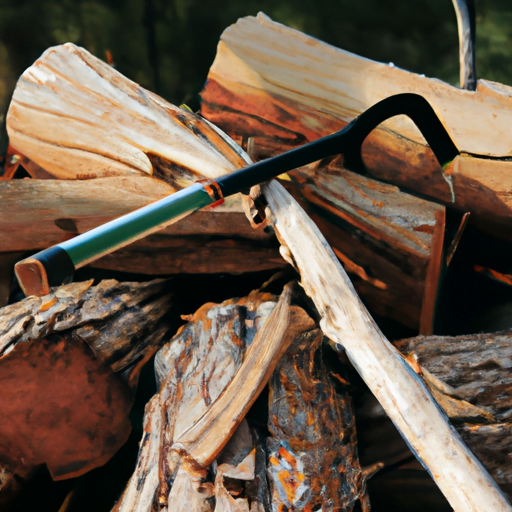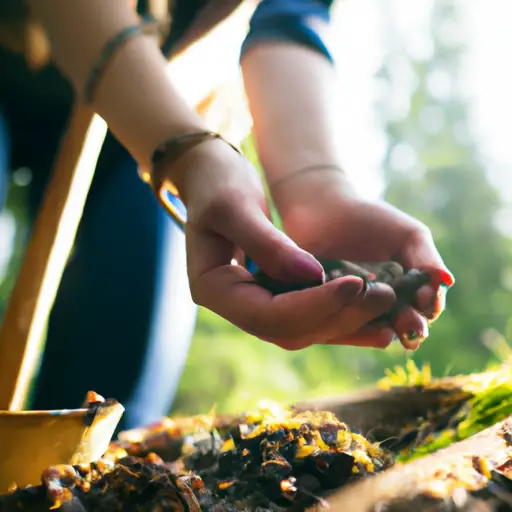Have you ever wondered what it would be like to live off the grid? To be completely self-sufficient, disconnected from the traditional power grid, and living a lifestyle that is completely independent from modern society? Living off the grid has become an increasingly popular choice for many individuals seeking a simpler, more sustainable way of life. In this article, we will explore the lifestyle of off-grid living in detail, from the challenges and benefits to the various methods and technologies used.
Living off the grid refers to the lifestyle where individuals or households are self-reliant and do not rely on public utilities such as electricity, water, or gas. This means generating their own power, collecting rainwater, growing their own food, and managing waste in a sustainable manner. People who choose to live off the grid are often looking to reduce their environmental impact, increase their self-sufficiency, and embrace a simpler way of life.
In the following paragraphs, we will delve deeper into the different aspects of off-grid living, such as the challenges faced, the benefits experienced, and the various methods individuals use to successfully live off the grid. Whether you are curious about the lifestyle or considering making the transition yourself, this article will provide you with a comprehensive understanding of what it means to live off the grid. A person who lives off the grid is someone who has chosen to disconnect from municipal utility services such as electricity, water, and sewage. Off-grid living often involves generating their own energy through renewable sources, managing their water supply, growing their own food, and implementing effective waste management solutions. This lifestyle offers numerous advantages, but it also comes with its fair share of challenges. In this article, we will take an in-depth look at the essential components of off-grid living, including energy independence, water management, food production, waste management, and the various options for off-grid homes and shelters. We will also explore the mindset and preparations required to embrace this lifestyle.

What is Off-Grid Living?
Definition of Off-Grid Living
Off-grid living is a lifestyle in which individuals or families choose to live independently from traditional utility services. They strive to become self-sufficient by generating their own power, managing their water supply, growing their own food, and implementing sustainable waste management practices. By disconnecting from the grid, they aim to reduce their ecological footprint and live a more sustainable and environmentally friendly existence.
Advantages of Off-Grid Living
Living off the grid offers numerous advantages. One of the main benefits is energy independence, as off-gridders rely on renewable energy sources such as solar power, wind power, hydro power, and biomass energy. Not only does this reduce reliance on fossil fuels and decrease carbon emissions, but it also provides a sense of security in knowing that energy will always be available, even during power outages. Additionally, off-grid living promotes self-sufficiency and resilience, as individuals are less dependent on external systems and are better equipped to handle emergencies or disruptions. It also allows for a greater connection to nature and promotes a simpler, more intentional lifestyle.
Challenges of Off-Grid Living
While off-grid living has many advantages, it also comes with its fair share of challenges. One of the main difficulties is the initial cost and investment required to set up an off-grid system. Installing solar panels, wind turbines, or other renewable energy sources can be expensive, especially when combined with the costs of water management systems and food production infrastructure. Additionally, off-grid living requires a significant amount of planning and maintenance. It can be time-consuming and demanding to manage energy production, water sources, and food production on a daily basis. Furthermore, living off the grid may require individuals to develop new skills and knowledge in order to effectively maintain and troubleshoot their systems. However, despite these challenges, the rewards and fulfillment that come with off-grid living often outweigh the difficulties for those who choose this lifestyle.
Essential Components of Off-Grid Living
Energy Independence
Energy independence is a fundamental component of off-grid living. It involves generating one’s own power through renewable energy sources. Solar power is one of the most common methods used by off-gridders, as it harnesses the sun’s energy and converts it into electricity. This can be achieved through the installation of solar panels on roofs or in open spaces. Wind power is another popular option, especially in areas with sufficient wind resources. Small-scale wind turbines can be installed to capture wind energy and convert it into electricity. Hydro power, which involves using the flow of water to generate power, is also utilized by those living off the grid, particularly in areas with access to rivers or streams. Biomass energy, derived from organic materials such as wood or agricultural waste, can be used for heating and cooking purposes. Ultimately, the combination of these renewable energy sources provides off-gridders with a reliable and sustainable energy supply.
Water Management
Another crucial component of off-grid living is water management. Off-gridders must take measures to ensure a consistent and safe water supply. This can be achieved through a variety of methods, including rainwater harvesting, well water extraction, and utilizing natural springs. Rainwater harvesting involves collecting rainwater from roofs or other surfaces and storing it in tanks or cisterns for later use. Well water, obtained from drilling underground, is a reliable and accessible water source for many off-gridders. Natural springs, which occur when groundwater naturally emerges to the surface, can also provide a sustainable water supply. Regardless of the water source, it is important to implement effective water purification techniques to ensure the water is safe for consumption.
Food Production
Achieving self-sustaining food production is a key aspect of off-grid living. Off-gridders often utilize organic gardening practices to grow their own fruits, vegetables, and herbs. This involves using natural fertilizers and pesticides, avoiding synthetic chemicals, and practicing crop rotation to enhance soil fertility. Permaculture principles, which focus on creating sustainable and self-sufficient ecosystems, are commonly implemented to maximize food production. Livestock and poultry are also often integrated into off-grid systems, providing a source of meat, eggs, and milk. Aquaponics, a system that combines aquaculture (fish farming) and hydroponics (growing plants in water), is another innovative method used by off-gridders to produce both plants and fish in a symbiotic relationship.
Waste Management
Effective waste management is essential in off-grid living to maintain a healthy and sustainable environment. Off-gridders often implement composting systems to transform organic waste into nutrient-rich soil amendments. By composting food scraps, yard waste, and other organic matter, off-gridders can create their own fertilizer for their gardens. Recycling is another important practice to reduce waste and promote sustainability. Off-gridders strive to minimize their consumption of goods and often repurpose or repair items rather than discarding them. Greywater systems are also commonly employed to recycle water from sinks, showers, and laundry for irrigation purposes. Furthermore, off-gridders take measures to dispose of green waste in an environmentally friendly manner, such as mulching or using it as biomass fuel.

Off-Grid Homes and Shelters
Tiny Houses
Tiny houses are a popular choice among off-gridders due to their small size, affordability, and environmental friendliness. These compact dwellings are designed to maximize space and minimize energy consumption. They often utilize innovative storage solutions, such as built-in furniture and multi-functional spaces. Tiny houses are typically built with sustainable materials and are highly energy efficient, using less electricity for heating, cooling, and lighting.
Earthships
Earthships are unique and sustainable off-grid homes that are made primarily from recycled materials such as tires, bottles, and cans. These self-sufficient dwellings are designed to be highly energy efficient and environmentally friendly. Earthship design principles incorporate passive solar heating, rainwater harvesting, and on-site food production through indoor greenhouses.
Shipping Containers
Repurposing shipping containers as living spaces has gained popularity in the off-grid living community. These containers are durable, versatile, and readily available. By converting shipping containers into homes, off-gridders can create affordable and sustainable living spaces. The containers can be insulated, fitted with windows, and connected to off-grid energy systems and water management solutions.
Strawbale Homes
Strawbale homes utilize straw bales as a building material, providing excellent insulation properties and reducing the need for additional heating or cooling. These homes are energy efficient, cost-effective, and environmentally friendly. Strawbale construction combines natural and sustainable materials with traditional building techniques.
Embracing a Simple Lifestyle
Reducing Consumption
A key aspect of off-grid living is minimizing consumption and embracing a simpler lifestyle. Off-gridders prioritize their needs over wants, focusing on essential items and reducing waste. By being mindful of their consumption habits, they can live more sustainably and reduce their impact on the environment.
Minimalist Design
Minimalist design principles often go hand in hand with off-grid living. By decluttering and simplifying their living spaces, off-gridders create a more efficient and functional environment. Minimalist design also promotes a sense of calmness and tranquility, allowing individuals to focus on what truly matters in their lives.
Frugal Living
Off-grid living often requires a frugal mindset to make the most of limited resources. Off-gridders learn to make do with what they have, repurpose items, and find creative solutions to everyday challenges. This frugal lifestyle not only reduces expenses but also fosters a sense of resourcefulness and self-sufficiency.
Appreciation for Nature
Living off the grid offers numerous opportunities to connect with and appreciate nature. Off-gridders often choose locations surrounded by natural beauty, whether it be mountains, forests, or waterfronts. Being immersed in nature allows individuals to develop a deeper understanding and respect for the environment, further motivating them to live sustainably.
Preparing for Off-Grid Living
Research and Education
Before embarking on an off-grid lifestyle, it is crucial to conduct thorough research and educate yourself about the various components and challenges of living off the grid. This includes learning about renewable energy systems, water management techniques, food production methods, and waste management practices. By acquiring knowledge and skills, you will be better equipped to successfully transition to off-grid living.
Financial Considerations
Off-grid living often requires an initial investment in the necessary infrastructure and equipment. It is important to carefully consider your financial situation and budget for these costs. While the initial investment may be significant, off-grid living can result in long-term savings by reducing monthly utility bills and providing self-sufficiency.
Choosing the Right Location
Selecting the right location is crucial for off-grid living. Factors to consider include access to renewable energy sources, availability of water sources, climate conditions, and local regulations. It is important to research and ensure that the chosen location aligns with your goals and needs for living off the grid.
Building Skills and Supplies
To thrive in an off-grid lifestyle, it is essential to develop the necessary skills and acquire the appropriate supplies. This may include learning how to maintain and troubleshoot renewable energy systems, practicing organic gardening techniques, and developing DIY skills for building and repairs. Additionally, stockpiling necessary supplies, such as non-perishable food, medical provisions, and backup equipment, is crucial for emergencies or unexpected circumstances.
Conclusion
Living off the grid is a lifestyle choice that offers numerous benefits and challenges. By embracing off-grid living, individuals can achieve energy independence, practice sustainable water management and food production, and implement effective waste management solutions. The various options for off-grid homes and shelters provide flexibility and affordability, allowing individuals to customize their living spaces to suit their needs. Embracing a simple lifestyle, reducing consumption, and appreciating nature are integral to this way of living. However, off-grid living requires thorough preparation, research, and financial considerations. Despite the challenges, those who choose the off-grid lifestyle often find fulfillment, resilience, and inspiration for sustainable living. So, if you are ready to explore a lifestyle that prioritizes self-sufficiency, environmental consciousness, and a deeper connection to nature, off-grid living may be the perfect fit for you.




